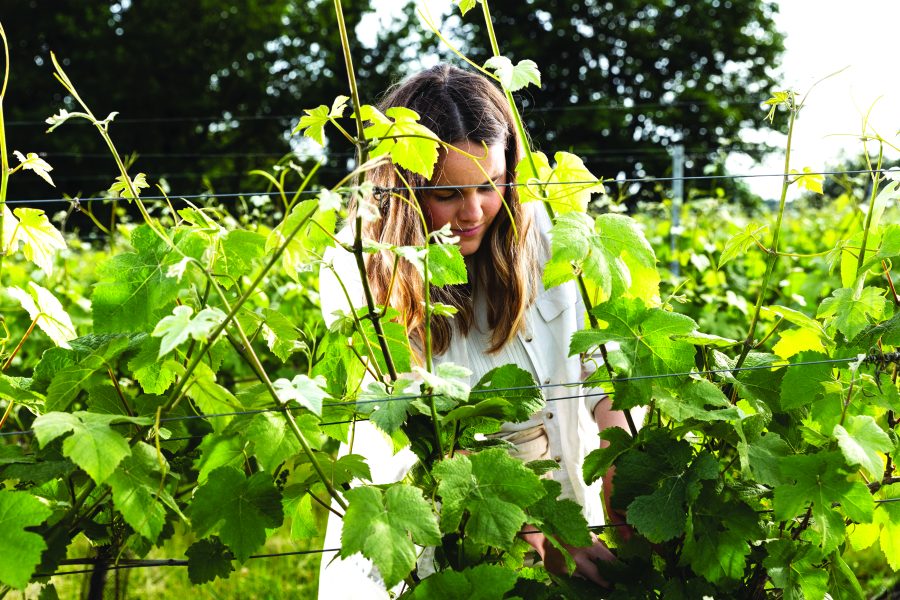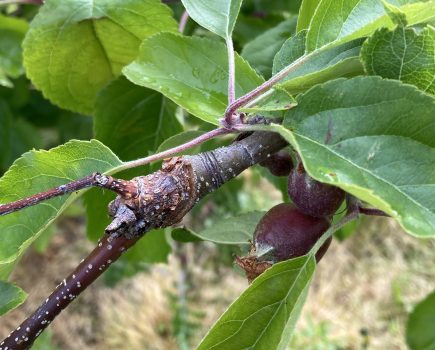As orchards move into a critical growth phase, fruit growers must stay ahead of disease threats, pest pressures and nutrition needs. Proactive management will ensure optimal fruit set, quality and overall tree health. Here’s a look at the key actions to take now.
Apple orchards: Disease prevention and nutrition
Scab remains a major concern, requiring protective treatments on green tissue. Fungicides containing active ingredients such as trifloxystrobin, penthiopyrad, fluxapyroxad, kresoxim-methyl and mefentrifluconazole offer both protectant and curative activity against scab and mildew. Ensuring thorough coverage will be crucial in maintaining clean foliage and fruit.
Rosy Apple Aphid populations are emerging, necessitating treatments before pink bud. Aphidicides containing flonicamid are effective, while other products also have action on weevils and caterpillars. Monitoring populations early can prevent significant damage to young fruit.
Pre-flowering foliar applications of boron are essential for improving pollen tube development and fruit set. Nitrogen levels should be assessed and adjusted to support healthy growth without encouraging excessive vegetative development.
Pear orchards: pest control and pollination support
Pear Sucker nymphs are present in flower buds, making early control essential. Insecticides may offer effective suppression before flowering, preventing later infestations. Regular monitoring ensures targeted treatments and minimises damage.
For orchards with inconsistent bud development, natural biostimulants containing seaweed extracts can enhance pollination, while osmo protectants help support flowers during challenging conditions. Maintaining protective fungicide coverage will also safeguard fruit quality.
Plum orchards: thinning and disease prevention
Plum trees are entering a key flowering stage, making blossom thinning a priority. Applications of ammonium thiosulphate help manage fruit load, ensuring a balance between yield and quality. Thinning also improves air circulation, reducing fungal disease risk.
Blossom wilt remains a threat, and fungicides should be applied at the start of flowering to prevent infections. Calcium applications at this stage help strengthen fruit, while proper fertilisation supports overall tree health and productivity.
Cherry orchards: optimising fruit set and protection
Cherry orchards require attention to fruit set and disease control. Blossom wilt protection is essential, with fungicide applications at flowering to prevent disease outbreaks.
Biostimulants derived from seaweed extracts or amino acids can promote fruit retention and improve uniformity. Ensuring adequate pollination by monitoring bee activity and potentially supplementing with managed pollinators can significantly boost yields. Early pest control, particularly for aphids, prevents tree stress and disease transmission.
Weed and orchard floor management
Uncontrolled weed growth competes with trees for nutrients and water. Timely herbicide applications using systemic or contact-based active ingredients help maintain a clean orchard floor, improving access for sprays and reducing competition.
Mulching provides an alternative or complementary approach, improving soil structure, moisture retention and weed suppression while promoting overall orchard health.
Conclusion
Strategic disease management, pest control and balanced nutrition are key to optimising fruit yield and quality. Proactive scouting, well timed interventions and integrated management approaches will support strong fruit set and a productive season.
By staying ahead of these challenges, orchard managers can ensure healthy, high quality fruit while setting the foundation for a successful harvest and long term orchard sustainability.
For more like this, sign up for the FREE South East Farmer e-newsletter here and receive all the latest farming news, reviews and insight straight to your inbox.







